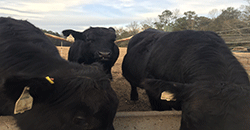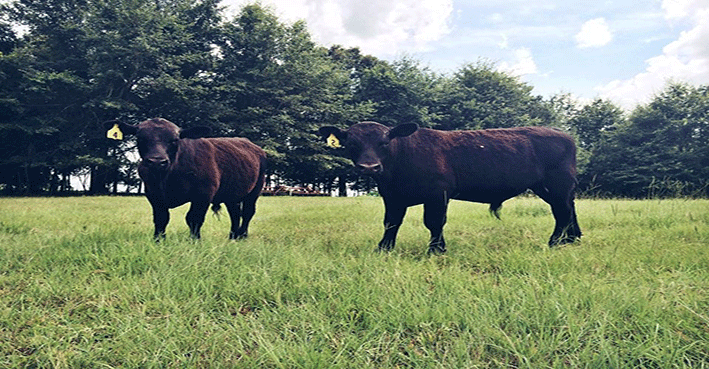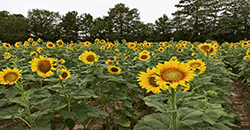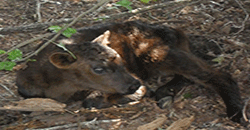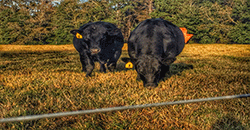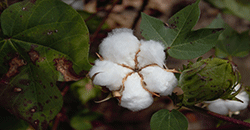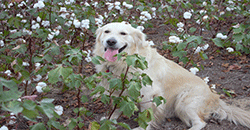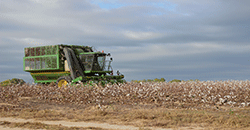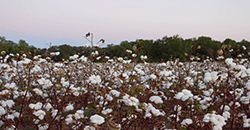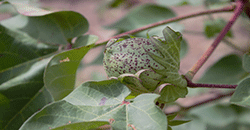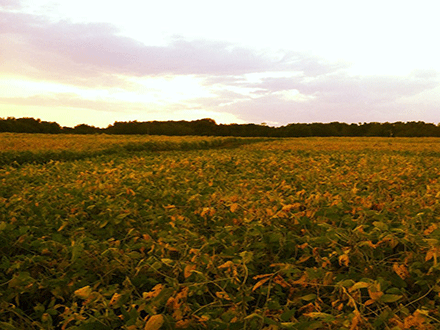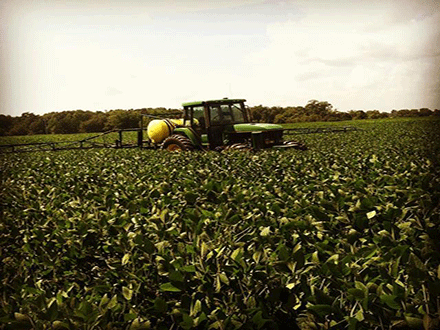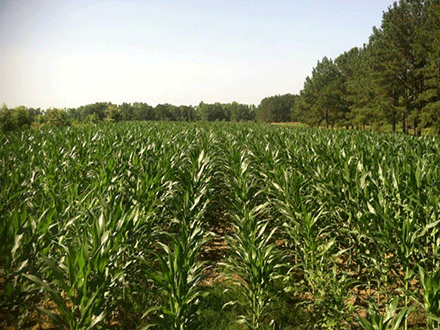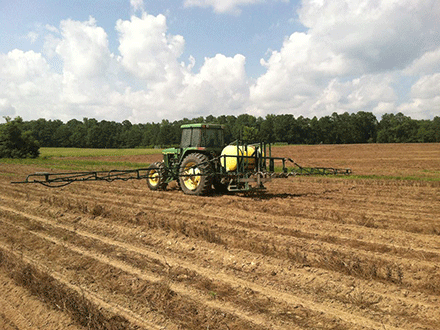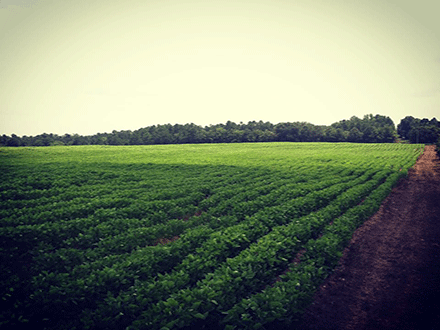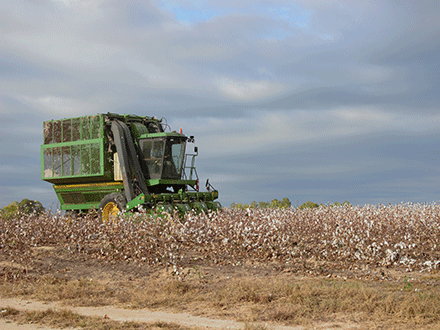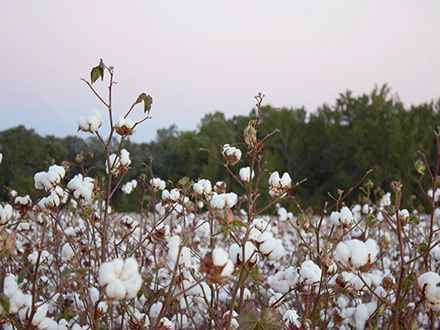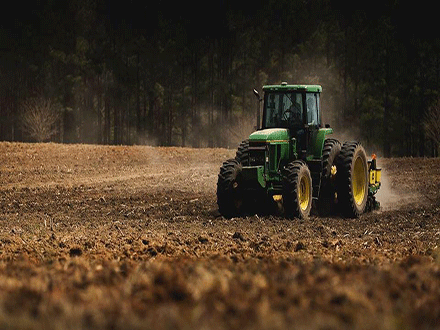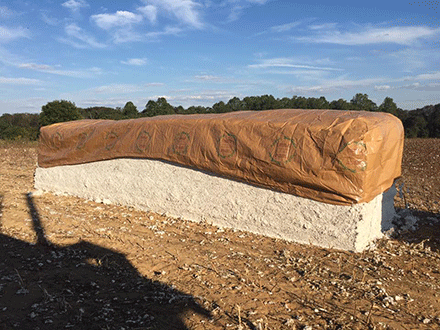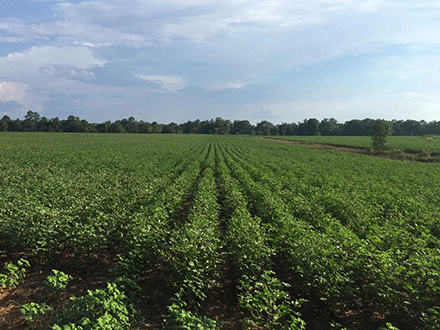Row Crops
Our ancestors have been raising row crops in Lee County since the 1850s and we are proud to carry on that tradition.
In 2009 Garrett planted a few acres of corn with his uncle and a love for row crops was born and cultivated. Those few acres of corn grew to 110 acres of soybeans in 2014 to 120 acres of sesame in 2015 to 240 acres of cotton in 2016 and 2017. Today, Garrett has added peanuts to his cotton rotation.
Each year we implement new technologies and conservation strategies. As Thomas Jefferson said, we are tied to our country and we strive to be responsible stewards of the land.
Planting Timeline

1. Take Soil Samples
Each year we take grid soil samples of each field and have the samples tested at the Auburn University Soil, Forage and Water Testing Laboratory. Taking soil samples each year is critical to the success of the row crops becuase it tells us exactly what nutrients are or are not in the soil.
- After the lab tests the soil samples, each field is given it's own nutrient perscription.
- The prescription help us make sure our crops receive the proper amount of fertilizer and nutrients and helps to eliminate any wasteful use of money and resources.

2. Spread Fertilizer
With the nutrient prescripton we receive from the soil samples, we spread fertilizer on each field before planting.
- Our cotton fields are spread with chicken litter, a mixture of manure, bedding and water from chicken houses, and is a high-quality fertilizer full of nitrogen (N), phosphorus (P) and potassium (K).
- Peanut fields are spread with a fertilizer blend of nitrogen (N) and potassium (K) to help kick-start the growth of the peanut plant.

3. Terminate Cover Crops
Every fall after harvest, we plant a cover crop on each field to reduce erosion, increase water infiltration, suppress weeds and increase organic matter. Our first step of field prep each spring is to terminate the cover crop by using a herbicide.
- Cover crops are important in keeping the topsoil in place.
- By plowing up the cover crop we are adding to the amount of organic matter in the soil, making the soil helathier and ready for spring planting.

4. Strip-Till or No-Till Farming
By strip-tilling our fields, we plow a four-inch strip to minimize soil desturbance an dleave the majority of the fall cover crop in place.
- Strip-tillage, also called conservation tillage, is a system of raising crops with minimal disturbance of soil while retaining crop residue on soil surface.
- No-Till Farming is a practice our grandfather practiced and we are proud to continue in his conservation footsteps.

5. Planting
We begin planting early April to mid-May into the four-inch strip made by the strip-till. We use GPS technologies to make sure wer are always in the right spot.
- Cotton is typically planted a 1/2-inch to 1 1/4-inches deep.
- Peanuts like being planted deep and can be planted into the soil as deep as three-inches down.

6. Side Dress Fertilizer
Side dressing fertilizer is the common practice of spreading fertilizer over a growing crop. This is done each year in late June. New technologies in agriculture help us apply the fertilizer precisely to ensure the correct amount is applied and there is no waste.
- For a well-developed cotton plant, nitrogen (N) and small amounts of sulfer (S) is applied to meet the soil nutrient requirements that the soil perscription tells us.
- Gypsum, a calcium source, is spread on the peanut fields to aid in the development of the peanut plant. This development is called "pegging."

7. Defoliating Cotton
Before cotton can be harvested the leaves must be defoliated. When the cotton bolls begin opening up, Garrett sprays cotton fefoliant on the cotton plant to induce the naturally-occurring hormone in cotton to trigger leaf drop. We wait two weeks after spraying before harvesting.
- Cotton must be defoliated to keep the fibers white. If the cotton is harvested with the leaves still on the stalk the fibers can be stained green and the quality of the cotton is diminished.
- Once the cotton is defoliated it is important that it doesn't rain because the rain will damage the cotton boll and its quality.

8. Digging Peanuts
Peanuts are grow in the root system of the peanut plant and have to be dug up to be harvested.
- Using a peanut inverter, the peanut plants are dug up and flipped over to allow the peanuts to dry in the sun.
- We wait four to five days after digging and inverting the peanuts before harvesting.

9. Harvesting Peanuts
Harvesting peanuts is a slow process. Only about 10 acres of peanuts can be picked in a day, as long as everything goes smoothly.
- The peanut combine is pulled behind the tractor and picks the inverted peanuts that have been dried by the sun.
- Once the combine is full, the peanuts are dumped into the dump cart, then into a semi-trailer that is waiting to be picked up by the peanut mill.

10. Cotton Harvest
After the cotton has been defoliated, which takes approximately two weeks after being sprayed, the crop is picked.
- Once the cotton picker is full of cotton it is emptied into the boll buggy and the buggy is emptied into the module builder.
- Instead of taking loaded cotton wagons to the gin, cotton is packed into huge square bales called modules and are picked up by the gin. One module equals 18 round bales of cotton.

11. Planting Cover Crops
Once harvest is over and all the cotton stocks have been mowed down, Garrett plants a cover crop on each of his fields to help prepare them for the next planting season.
- Cover crops help make sure the topsoil doesn't erode or wash away.
- They also help rebuild the soil health following the planting season.
